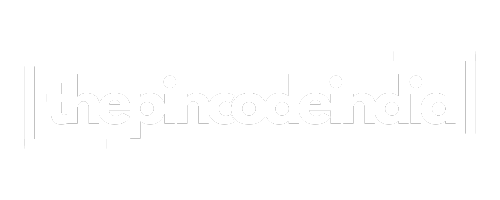In today’s digital-first world, data is both an invaluable asset and a growing liability. We need smarter, more collaborative AI systems to solve pressing challenges from medical research to financial modeling but we also need to protect the integrity of sensitive information. Unfortunately, these two goals often feel at odds: building powerful AI usually means sharing more data, while protecting privacy often means sharing less.
This is where technologies like ZKP Coin are stepping in to reshape the conversation. Instead of forcing organizations and individuals to choose between collaboration and privacy, new infrastructures allow them to have both. By combining cryptographic proofs with decentralized incentives, these systems let participants contribute compute power, validate outputs, and earn rewards all while keeping their data sealed away from exposure.
1. The Architecture Behind Privacy-Preserving AI
Modular Design for Scalability
The foundation of privacy-first AI networks lies in their layered modular architecture. Instead of binding storage, compute, verification, and governance together, each component is separated into distinct layers:
- Consensus & Security Layer: Manages ordering, staking, and protection against malicious activity.
- Execution Layer: Handles the heavy lifting of AI tasks like model training or inference, often running off-chain or in trusted environments.
- Proof Layer: Uses cryptographic methods to generate verifiable proofs of correctness, showing that computations were executed faithfully without revealing sensitive data.
- Storage Layer: Holds encrypted or off-chain data, while only cryptographic commitments (like hashes or Merkle roots) appear on-chain.
This modular approach ensures systems can evolve: if new storage methods or proof algorithms emerge, they can be swapped in without disrupting the whole infrastructure.
Proof Nodes and Contributors
At the core are proof nodes and contributor devices, which perform workloads, generate proofs, and validate others’ outputs. These nodes don’t just process blindly; they provide verifiable attestations of correctness. By requiring each computation to be backed by a proof, the network ensures participants can trust outputs without seeing the raw data that produced them.
2. Why Privacy Is Essential for AI Collaboration
The Locked Data Problem
Some of the most valuable datasets in the world medical records, financial logs, or proprietary research — are locked away because of regulatory and competitive concerns. Yet AI thrives when it can access diverse and rich data. Privacy-preserving infrastructures powered by tokens like ZKP Coin solve this paradox by allowing computations to run over private or encrypted data, with the results verified through proofs.
High-Impact Use Cases
- Healthcare: Hospitals and labs can co-train models on rare diseases without sharing raw patient records.
- Finance: Banks can collaborate on fraud detection or risk models while keeping internal numbers private.
- Identity Verification: Individuals can prove attributes such as age, certification, or creditworthiness without exposing full identity documents.
- Governance: Public agencies can deploy AI models while publishing verifiable proofs of outcomes, ensuring transparency without data leaks.
- Marketplaces: Data custodians can rent out datasets without revealing them, while AI developers can receive proof-backed results and pay only for verified work.
3. ZKP Coin and Incentive Structures
The Token as an Economic Engine
The ZKP Coin is central to these ecosystems. It fuels staking for security, covers proof verification fees, and rewards contributors for compute, validation, or storage. Without a strong incentive layer, participants would lack motivation to provide resources, so the token ties everyone’s contributions to measurable value.
Fair Rewarding of Contributions
Since proofs encode measurable metrics like compute cycles, memory, or I/O steps, rewards can be distributed with precision. This transparency eliminates ambiguity about who contributed what, aligning everyone’s incentives toward system growth.
Governance with Proofs
Over time, networks tend to move toward decentralized governance. Stakeholders can use the token to vote on upgrades, parameter changes, or new features. Because governance decisions themselves can be backed by proofs, trust is embedded not just in computation but in the rules of the system.
4. Real-World Use Cases in Motion
Medical Research Collaboration
Imagine research institutions across the globe pooling their insights to detect rare diseases. Each one runs local computations, generates proof-backed updates, and contributes to a global AI model. No patient records are exchanged, yet the final system benefits from the collective knowledge of all contributors.
Secure Corporate AI Development
Companies in biotech, finance, or climate science often want to collaborate but can’t risk exposing trade secrets. Using a privacy-first AI network, they can share model updates, not raw data, ensuring their intellectual property remains untouched.
Public Trust in Government AI
If a government AI system assigns benefits or enforces regulations, publishing both the results and proofs of correctness allows auditors and citizens to confirm fairness without needing access to sensitive datasets.
Encrypted Data Marketplaces
Data owners can list encrypted datasets. Developers send compute requests, receive proof-verified outputs, and pay with tokens like ZKP Coin. The owner gets rewarded, the developer gets verified insights, and the raw data stays private.
5. Challenges Still Ahead
Computational Costs
Generating succinct proofs for complex AI workloads is resource-intensive. Although progress in recursive proofs and proof aggregation is improving efficiency, scaling to massive AI models remains a challenge.
Interoperability
For real-world adoption, systems must integrate with existing AI tools like TensorFlow and PyTorch, as well as with blockchain environments like EVM or WASM. Seamless APIs and developer support will be critical.
Economic Risks
Tokenomics must guard against manipulation — whether by collusion, centralization, or Sybil attacks. Designing systems that incentivize long-term fairness remains a core challenge.
Usability
For developers and end users, cryptography should remain invisible. Strong SDKs, abstractions, and intuitive interfaces are essential to ensure privacy-preserving AI doesn’t remain niche or overly technical.
6. Future Directions
Advancing Proof Systems
Expect breakthroughs in speed and scalability, with more compact proofs, post-quantum readiness, and transparent set-ups making privacy-preserving systems more practical.
Expanding AI Workloads
While many systems now support inference or partial training, full-scale model training and fine-tuning on encrypted data is on the horizon.
Stronger Ecosystems
As communities and open-source frameworks form around ZKP Coin and similar technologies, adoption will accelerate. Shared standards and tooling will lower barriers for developers.
Regulatory Momentum
Healthcare, identity, and finance are likely to lead adoption, as regulations increasingly demand verifiable compliance. Privacy-first AI may shift from an option to a requirement.
7. Human Impact: Restoring Control
At its core, this movement isn’t about cryptography or tokens it’s about people reclaiming control over their digital assets. Users no longer need to surrender their personal details to access services. Researchers can collaborate across borders without breaking confidentiality. Small firms can participate in AI ecosystems without risking their competitive edge.
By placing privacy and verifiability at the center, these networks empower individuals and institutions to participate in the digital economy without fear.
Conclusion
The rise of privacy-first AI infrastructures powered by ZKP Crypto represents a turning point in how we approach intelligence and trust. By separating computation from data exposure, layering cryptographic proofs into workflows, and aligning incentives through tokens, these systems make collaboration both possible and safe.
Challenges remain scaling proofs, securing economic incentives, and simplifying usability but the trajectory is clear. We’re moving toward a world where intelligence does not come at the cost of privacy, and where trust isn’t assumed, but proven.


